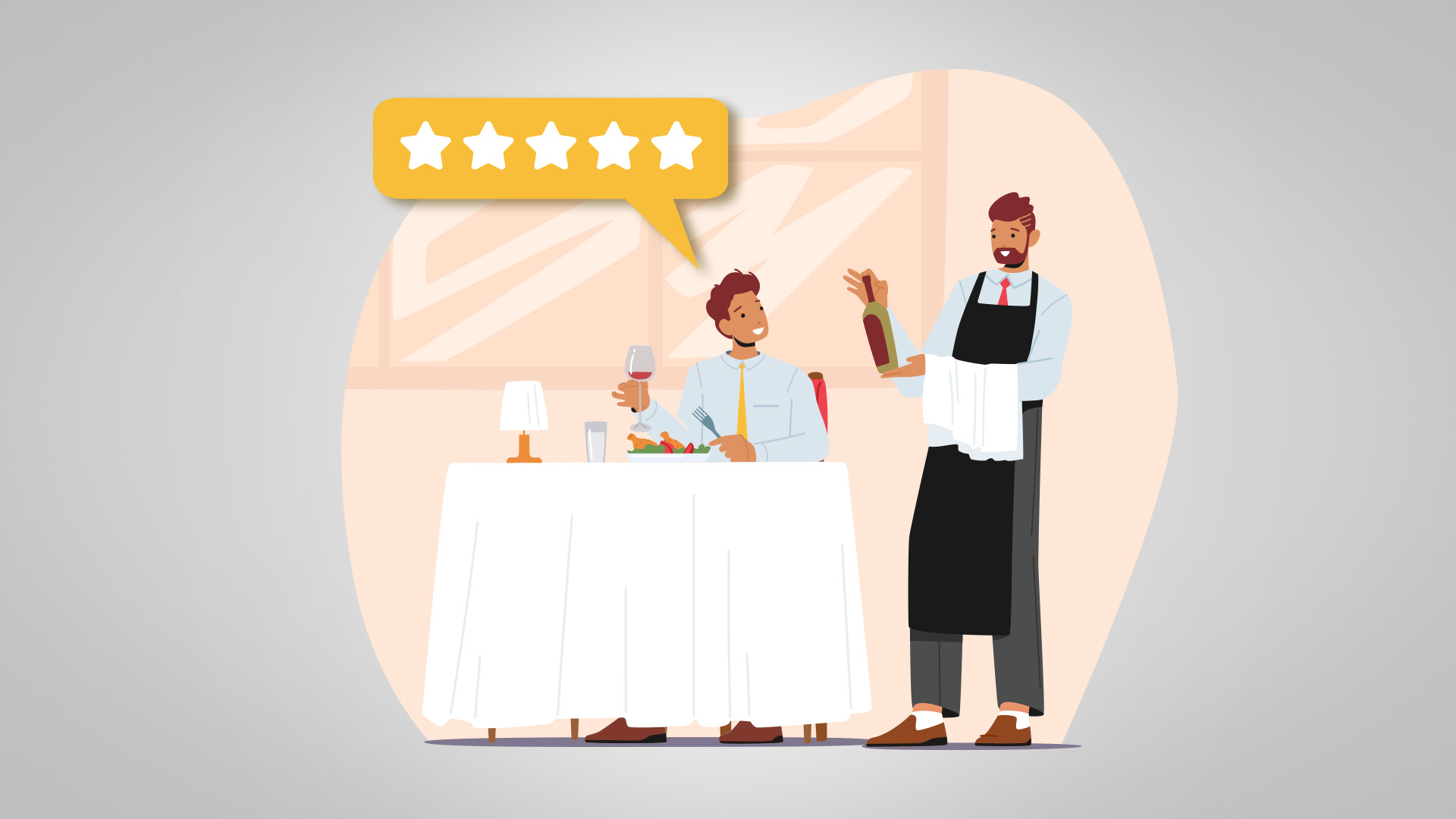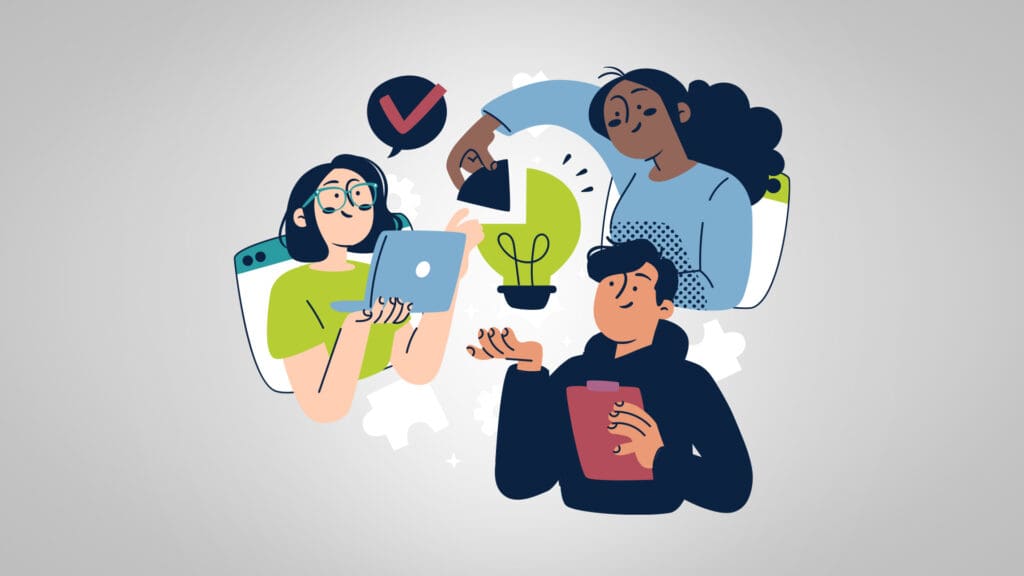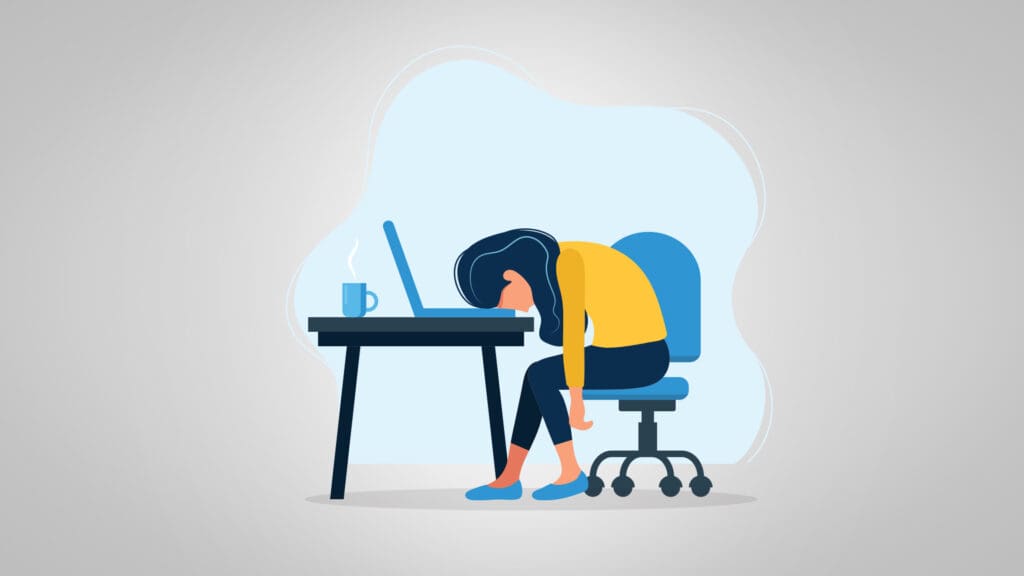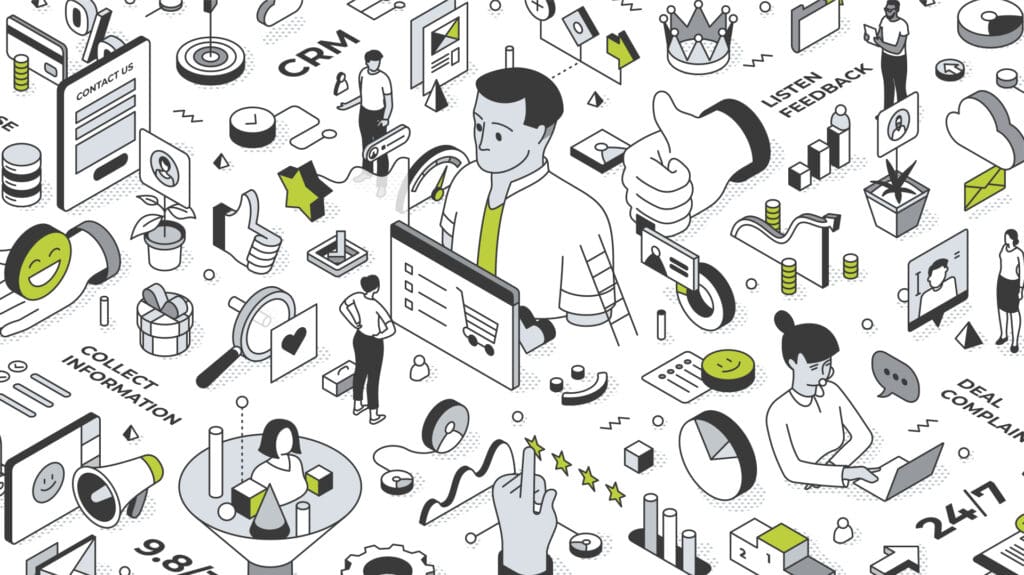
What is the Most Direct Cause of Customer Loyalty? How to Foster Brand Devotion by Merging EX and CX
The restaurant’s staff was “in the weeds” a lot more than a typical Saturday night and it was starting to overtake the kitchen. A full house of four and six-top tables loaded with hungry guests was starting to get antsy, and the manager knew that her reputation was on the line every time they got slammed like that. But it’s OK. She knew it was coming. That night, she had the A team on the floor. The big guns. While the kitchen was digging its way out, servers were moving smoothly through the crowd, dispensing sympathy, smiles, and jokes along with fresh drinks. The manager moved in on tougher cases to “take care” of those most annoyed. While arguably a disaster that night in the kitchen, the restaurant generated eight five-star reviews on Google and two more on Trip Advisor from out-of-towners. “We’ll definitely be back,” glowed one review.
In this edition of Plain Talk, we’ll reveal the most direct cause of customer loyalty. Then, we’ll look at improving the employee experience and how it flows into creating customer loyalty.
- What Is the Most Direct Cause of Customer Loyalty?
- The X Factor: Why You Should Merge Your Customer and Employee Experiences
- 8 Ways to Increase Customer Loyalty With CX and EX
- Meeting Experience Expectations
- Get Expert Help With the Most Direct Cause of Customer Loyalty
What Is the Most Direct Cause of Customer Loyalty?
Ready? (Drumroll, please.) It’s this: consistently positive customer service. That’s it. Your customers deserve the best service possible, right? When customers feel valued and appreciated, they’re more likely to return and recommend your business to others. A positive customer service experience is transformative, literally. It has the power to turn a one-time buyer into a lifelong advocate. It’s also lucrative. Sixty-three percent of customers say they’re willing to pay more to patronize brands they’re loyal to.
Customer loyalty and service by the numbers
Earlier this year, relationship marketing company Marigold published their 2024 State of Loyalty report, which provides several statistics revealing the correlation between customer service and loyalty. Here are a few:
- 74% of consumers cite customer service and support as important or critically important to maintaining brand loyalty.
- 63% of consumers cite a willingness to pay more to shop with the brands they’re loyal to.
- 85% of consumers say their favorite brand treats them like an individual.
- 45% of consumers cite excellent customer service as a factor more important than price when it comes to making a purchase decision.
The numbers don’t lie. You’ll be rewarded with loyalty by providing outstanding service. However, I know what you’re thinking. That all sounds lovely and wonderful, but it’s easier said than done. How do you go about it?
Why not start in-house, right with your own team?
The X Factor: Why You Should Merge Your Customer and Employee Experiences
Ever heard the saying (or just instinctively know), “If mama ain’t happy, ain’t nobody happy”? The same is true of your employees. If they aren’t driven and excited to work at your company, it’s only natural they’ll exude that ennui (or worse—outright disdain) while interacting with your customer base. I mean, think about yourself as a customer or interactions you have with other companies. You can tell when people aren’t thrilled to work there.
In the past, efforts to improve customer service have been focused mostly on training employees to respond to customer feedback and complaints. Their own internal experiences, however, have been mostly overlooked. Today, savvy businesses are blending the two. This merging of customer experience (CX) and employee experience (EX) is something all companies should explore if they want to win customer loyalty through positive service experiences.
“What a lot of companies miss is that a great employee experience leads to a great customer experience.”
Denise Lee Yohn, “Why Every Company Needs a Chief Experience Officer,” Harvard Business Review
Joining CX and EX efforts amplifies the success of your business. When employees feel valued, supported and engaged, they’re naturally more motivated to provide exceptional service to customers. This positive energy flows to customers and fosters loyalty, repeat business, and word-of-mouth referrals—a beautiful ripple effect that benefits your entire organization.
While many fantastic articles and studies dive deep into successfully interconnecting CX and EX, we’ll keep things high-level here. Consider this a starting point for initial thinking and further study. However, even these introductory insights are useful now and for any business.
8 Ways to Increase Customer Loyalty With CX and EX
What if you took everything you know about improving customer service and applied it to your employees? Let’s look at eight recommendations for improving customer loyalty through customer and employee experiences and how they connect.
1. Personalize
Customers: Personalized messages and website experiences can significantly enhance the customer experience. According to Twilio, in 2021 49% of consumers said they would likely become repeat buyers if offered a personalized experience by a retail brand. Your company can easily use data to tailor its communications based on customer preferences and behaviors. Send personalized recommendations, birthday wishes and thank-you notes to make customers feel valued and appreciated. Each customer or potential customer is unique and on their own buyer journey. Tap into that at every funnel stage. Gather zero-party data and use it to build customer profiles and use it to:
- Deliver customized product recommendations
- Deploy triggered messaging based on specific scenarios
- Provide responsive customer service that remembers past interactions
An example of this is a pizza restaurant app (or, more likely, a progressive web app or PWA). This technology allows a customer to build and store their favorite pizza order and then one-touch reorder whenever they want. But wait, it gets better. If the customer typically reorders every Saturday at 6 p.m., an in-app reminder can be sent at 6:05 p.m. offering a one-touch option to reorder their favorite past order.
Employees: Investing in a CRM system provides comprehensive customer insights and enables employees to deliver more personalized and effective service. There are several on the market, and some are built for specific industries. Take time to research which platform works best for your company and team. Examples of customer relationship management and tracking software include:
A personalized work experience
Aside from a CRM, a personalized work experience with tailored training and flexibility can also enhance an employee’s experience with your company. Many non-traditional benefits are on the rise, allowing employers to customize their experience and build loyalty, including coaching and work-based benefits programs.
For example, YUM is invested in many professional development programs, including career coaching. They describe their Individual Development Plan as follows: “As an essential part of our annual Building People capability cycle, each employee works with a coach on their Individual Development Plan, which is intended to ensure ongoing professional development and support. As part of the plan, you have the opportunity to share your long-term career goals and interests and discuss directly with your career coach how to make them possible.”
The connection: By building customer profiles and developing messaging and training around them, you can empower your employees to make decisions. Plus, when employees feel valued through personalized career development and flexible working conditions, they’re more engaged and motivated. Leveraging technology and care to recognize both customers and employees as individuals is just smart business. Personalizing both parties’ experiences holistically recognizes and maximizes synergies.
2. Provide a consistent experience
Customers: Integrate your online and offline marketing efforts so that your brand experience is consistent everywhere. Borrowing from the above point, use tools that track customer interactions and preferences to help you tailor your marketing strategies to individual needs. A brand experience can be both individualized and consistent for that individual within the brand’s personality.
Employees: Develop and maintain a 360-degree approach for internal communication and messaging. Encourage department collaboration to break down barriers and ensure information flows freely. Empower frontline employees to connect with your in-office teams and vice versa. (Ways six and seven further elaborate on this.)
The connection: When sales/customer-facing, marketing, and customer service teams share insights and coordinate their efforts, they can create a smoother and more cohesive customer journey. A properly implemented CRM system ensures continuity in the customer experience throughout the sales cycle and customer service interactions. This seamless experience increases the likelihood of repeat purchases. Optimizing consistencies in both parties’ experiences holistically recognizes and maximizes synergies.
3. Invest in and utilize technology
Customers: Obviously, there’s no shortage of ways to use technology for more personalized service, quicker response times, and convenient access to support. Meet your customers where they are and anticipate their needs by letting machines do the work. This can include:
- AI-driven algorithms for personalized recommendations
- Loyalty programs accessed via a mobile app
- Automated, tailored follow-ups or surveys sent via email or SMS
- Live chat and chatbots on your website
- A seamless omnichannel experience
- Triggered messages for customer milestones
Employees: Let technology simplify employee workflows, provide real-time data to make informed decisions, and reduce the burden of manual tasks. Knowledge is power! This frees up time and allows them to focus on delivering meaningful, high-quality service.
The connection: Investing in technology that enhances employee and customer experiences creates a positive feedback loop. Empowered employees are more capable of delivering exceptional service, directly strengthening customer loyalty. Analyzing and optimizing technologies to address both parties’ experiences holistically recognizes and maximizes synergies.
4. Gather and act on feedback
Customers: Regularly collecting and acting on customer feedback allows businesses to refine their personalization strategies continually, leading to higher customer satisfaction and loyalty. While this might sound repetitive, it’s not. Here, you’re looking at the aggregate of the data and examining trends to make macro decisions.
For example, if the pizza restaurant notices that 50% of the custom-saved personalized pizzas in the app now include mushrooms and identifies Tuesday as their slowest day, they might take action. They could introduce a “free mushroom” promotion on Tuesdays, allowing customers to add mushrooms to their pizzas at no extra charge.
Employees: Similarly, gathering employee feedback on their work experiences and acting on it helps create a work environment that supports and values employees for higher retention and morale. At the end of the day, employees want to be proud to be part of a company that shares or at least accepts their values, profitably provides value to its customers and does good for its community. The only way a company can achieve these three goals is by having a strong feedback loop from the employees.
The connection: All good relationships are two-way. If you don’t listen to your employees and adapt to their changing needs, a competitor will. Likewise, if you don’t listen to your customers and adapt to their changing needs, a competitor will. The best feedback is that which profitably benefits both your employees and customers. Gathering and analyzing feedback from both employees and customers holistically allows you to see the whole field from each player’s perspective to make the best decisions.
5. Incentivize and reward
Customers: When times are tough, convincing customers to keep spending with your brand can be difficult. One way to combat this is by offering discounts or coupons in exchange for data sharing. This approach means you can continue collecting valuable insights while also acknowledging and rewarding loyal customers.
74% of consumers cite offers and promotions as important or critically important to maintaining brand loyalty.
2024 State of Loyalty Report, Marigold
Employees: Incentives such as performance bonuses, recognition programs, or career development opportunities demonstrate that employee efforts are appreciated and their dedication has tangible benefits. This can lead to higher productivity, improved teamwork, and a stronger sense of loyalty to the organization.
The connection: By rewarding customers and employees, you create a cycle of value where engaged employees deliver exceptional service, enhancing the customer experience and fostering loyalty. Though there is less overlap between rewarding customers and employees compared to the other seven methods discussed, it’s still valuable to approach incentives and rewards in a holistic way. Employee incentives should be consistent with benefiting the customer whenever possible.
6. Communicate brand purpose
Customers: What’s your mission and purpose? Is your brand making a positive impact on the world? Is it solving issues in the best possible way? Your customers, especially the younger ones, want to know. Keep them engaged by regularly sharing your brand’s values, activities, and updates. For example, Southwest Airlines aims to “Connect people to what’s important in their lives through friendly, reliable, and low-cost air travel.” Their vision is to “Connect people to what’s important in their lives through friendly, reliable, and low-cost air travel.” Not surprisingly, they once again dominated the JD Power category of Best Economy/Basic Economy Airlines.
Employees: Who wants to feel like just another cog in the wheel? Communicating the brand’s purpose effectively gives your employees a sense of meaning and connection to their work. Make it clear that their efforts and dedication contribute to a larger goal. Southwest does this by including brand promises to its customers and employees. It also features an employee promise, an excellent way to remind employees why they do what they do every day.
The connection: This shared purpose creates a strong bond between the brand, its customers, and its employees. So, even when competitors enter the picture, customers will be more inclined to stick with your brand. The only way to project your brand values to the customer is for every one of your employees to know they have a part on the team. Make sure you have a well-defined game plan. Personalizing both parties’ experiences holistically recognizes and maximizes synergies.
7. Maintain consistent communication
Customers: According to the famous quote, most often attributed to Woody Allen, “90% of life is showing up.” This is particularly true with customers in today’s busy world. Be sure to show up by sharing valuable updates, offering helpful content, and listening to their feedback. Regularly reaching out through personalized emails, social media updates, or quick responses to customer questions shows you genuinely care about customer experience.
Employees: Encourage open and safe dialogue with your employees through meetings, internal newsletters, and digital platforms. Keeping employees well-informed and engaged leads to a stronger, more cohesive team that delivers better customer service. Open safe channels for feedback. According to Gallup’s State of the Global Workplace: 2023 Report, “Worldwide, the cost of poor management and lost productivity from not engaged or actively disengaged employees is $8.8 trillion, or 9% of global GDP.” It’s imperative to keep those channels open.
The connection: When customers and employees feel well-informed, it creates a seamless and satisfying customer experience built on mutual trust.
8. Most importantly, empower your employees to help customers
Customers: Customers often interact with employees after a frustrating wait. They might spend time on hold listening to Kenny G or navigating a long line. Sometimes, they deal with an unhelpful chatbot, shouting “Representative!” in frustration. They often speak to a sympathetic but powerless employee when they finally connect. Let’s stick with our Southwest example. When your flight gets canceled, you want to deal with a ticketing agent empowered to do whatever it takes to make the situation right. That means everything from getting you on the next best flight (even with another airline) to providing some free necessities like a hotel overnight or basic toiletries.
Employees: Likewise, employees want to help customers. They want to feel that their presence matters and that they are advancing the company’s cause. Being a powerless punching bag does not lead to employee satisfaction. Although no frontline employee should have complete authority, they should be empowered to resolve the 20% of issues that account for 80% of complaints. Additionally, they need proper training and a clear path to escalate more complex problems effectively.
The connection: Employees want to provide value, and customers want to be treated respectfully. Understand that your employee experience is part of your brand experience. Stories of poor employee treatment repel customers. The happiest employees create the happiest customers.
Meeting Experience Expectations
As stated, positive customer service is the most direct cause of customer loyalty and technology has raised expectations. Technologies have allowed, and customers have come to expect, a consistent direct relationship with the brands they frequent. This demand has put increased pressure on organizations to train and empower all employees who come in direct contact with customers to provide superior service.
Today’s high employment market means service-capable employees are in great demand. In many retail situations, employees can find similar, higher-paying jobs on the drive home from their current position. The very same technologies that enable companies to better understand customers as individuals also allow for stronger personal relationships with employees.
We agree with Denise Lee Yohn’s earlier recommendation that experience, whether focused on customers (CX) or employees (EX), is most effectively managed under a unified reporting structure. This approach is often best led by a chief experience officer (CXO) in larger organizations.
Need Help With the Most Direct Cause of Customer Loyalty?
If you want to discuss your customer loyalty or need a CX audit, we’re your people! Our team can review your customer service touchpoints, develop a custom loyalty program, help you implement a CRM, and so much more. Drop us a note here or call 502-499-4209.
Our Articles Delivered
Signup to receive our latest articles right in your inbox.






